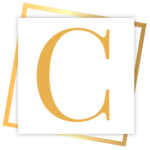When to sow artichokes?
From mid-March, you can set up the eyecups, the eyecups being the rejects to the strain, which contain rootlets and buds. If you are in the south of France, it is possible to plant them in August. They must be sown within a meter of each other, forming a bowl and then water generously.
For sowing: you will wait until February or March before sowing it in a bucket, in an indoor seedling or in a greenhouse.
For plantations: they are carried out in March or April or in September and October. It is easier to make them in March or April, the plant takes better and you avoid the risk of frost.
Which varieties to choose?
In France you will find two main categories of artichokes: whites and purples. They are then divided into different varieties.
White artichokes
- The Camus also called Brittany Camus: it is the biggest artichoke. It is grown mainly in Brittany and its leaves are gray-green in the form of scales and mates. He likes soil rich in silt. The heart of this artichoke is melting and its taste is subtle.
- The Castel: it is the closest variety to Camus. It is quite voluminous and has a round shape and tender green leaves. Its leaves when the artichoke is fresh are crisp, very brittle and very tight. After cooking, they are very tender. It has a subtle flavor and slightly sweet.
- The white Hyerois: it has very green leaves, long and narrow unlike other varieties and is grown in the eastern Pyrenees and a little in Provence. It is harvested between April and July.
- The big green of Laon is also called green of Italy or head of cat: It is an artichoke very close to the Camus, but which supports the cold much better. It is therefore easily grown in the eastern and northern regions.
- The Macau: it is a variety very close to the green of Laon and Camus which is cultivated most often in Gironde. His head is bulky and his scales are fleshy. Its foliage is clearer, but it offers the same qualities of flavors as its cousin of Laon.
Purple artichokes
- The violet of Provence or bouquet: Its leaves are quite small and nicely tinged with green and purple. Its shape is conical and it is found mainly in the south of France, in the eastern Pyrenees and Brittany, because it is sensitive to cold. It is appreciated because it melts in the mouth so it is tender. It has a flavor so fine that it is self-sufficient. It can be eaten raw or cooked for just a few minutes in boiling water. It is produced from March to May and from September to December.
- The thorny: it is recognized by its tapered form and owes its name to the spiny form of the end of its bracts. It is grown in the regions of Nice, Sicily, Sardinia and Genoa, mainly in the spring. It is crisp and tender, and is perfect for keen palates thanks to its subtle flavor.
- The green of Provence: it is a variety easily grown in the south of France that can be eaten raw with pepper. It has a delicate flavor and it is harvested in August and September, it is also very decorative.
- The Globe Green: it is a hardy variety that supports the cold very well and has a medium size. It is eaten as raw as cooked. It is also harvested in August and September. It is vivacious and very decorative. Its delicate flavor enchants all palates, it is close to the Cardon and its foliage is green gray on the silvery white upper surface on the internal face.
- The Salambo: is a variety that is very popular in the sunny regions, which is why it is often produced in Roussillon and Provence. It has a tapered shape and sturdy and long spines. Its violet color is very aesthetic and it is the smallest of the artichokes. It is eaten raw or cooked. It is recommended to lower cholesterol and digestive disorders.
What to do before sowing the artichokes?

As with all crops, the soil should be thoroughly dug deep, unlike other plantings, and all old roots or weeds that prevent the artichoke from growing should be removed. He likes humus soils, light and well drained. It is also necessary to enrich it with a substantial amount of compost and organic nitrogen. This can be done in April or May.
How to sow them?
Sowing:
It is an economical method when you want to grow artichoke in large quantities. It is done between February and April, if you go beyond this period, the artichoke will not be developed enough to spend the winter outside. Here are the different stages of sowing:
- Fill pans with a universal potting mix mixed with sand or potting soil specifically reserved for this crop. The bucket should be about 7 cm. The substrate will be filtering, light and without fertilizer.
- Make three pilot holes on 1 cm deep.
- Deposit three seeds in each pot,
- Cover the seeds, then compact slightly.
- Water in a fine rain with an apple watering can.
- Leave the cups at about 20 ° C.
- The seeds will be lifted about a week later.
Ten days later, you will begin to see the cotyledons and the first leaves. You can then perfectly proceed to the first transplanting:
- Deposit the buckets and recover the plants with their white roots.
- Plant them in slightly larger pots or the same size using the same type of potting soil, always without fertilizer.
- The young artichokes will be sheltered from the light and at a slightly lower temperature, this will harden them and make them more resistant.
The second transplanting:
Once the artichokes have developed in the buckets, they are repotted in pots of 12 to 15 cm in an enriched universal potting soil and placed under frost protection (chassis, tunnel, cold greenhouse). The most beautiful subjects are then planted two months later at the rate of one plant per meter in a well exposed place, then amend the soil.
The plantation
Eyecups are taken from adult feet in the fall or spring of the previous year. They are then planted in March-April in well-amended and rich soil. They must be spaced about ten centimeters apart without burying them too much. Then you have to water them generously so that the recovery goes well.
To note : The artichoke can stay in place for 3 to 4 years, however, it is quite greedy and it depletes the soil if you leave it longer. It is better then to wait 4 or 5 years before putting it back in the same place. It likes cabbage, radish, onion, kidney bean, pea, bean and lettuce.
Where to plant artichokes?
The artichoke appreciates the sunny places provided that the earth remains cool in summer. The soil must be rich in humus, perfectly chopped and light. The land will be prepared the autumn before planting. It is necessary to choose rustic varieties in the coldest regions, in the east and the north of France in particular. In this case, it will be protected by thick mulching and ridging in winter. It is cultivated very well on the Atlantic facade.
How to maintain them?

To maintain your artichokes, here are some useful tips:
Binez and weed regularly
As the winter approaches, if the weather is rough enough, cut the ends of the leaves, gather them in bunches that you will hold with a soft tie. Tackle the foot without putting soil in the heart of the plant to avoid the risk of rotting. Pack the tuft with wintering veil.
During the fall and winter seasons, protect the foot with mulching and discover them as soon as the risk of freezing is removed. It is also necessary to discover the feet during the showers so that the plant does not store moisture that it does not like.
Each year, keep 4 eyecups per foot, then take the others to plant elsewhere, this way you renew your culture every three years.
How to water artichokes?
Make regular watering, but not in large quantities, moisture is an enemy for the artichoke, because it causes its rotting. Never leave standing water.
Harvesting artichokes: when and how?
The artichoke is harvested between May and October, depending on the production cycle, before flowering and when the leaves are still tender, firm and young. If you do not harvest them at the right time, they will form a very decorative blue flower. One foot gives 3 to 4 large subjects, the first year, then 6 to 10 fat subjects, the following years.
You will cut them while keeping a stem long enough. This vegetable has many virtues, including digestive and rich in vitamins and trace elements, it can be consumed as often as you want.
Artichoke diseases and what to do?
The artichoke is subject to various diseases as well as parasite attacks:
Diseases of the artichoke
- MildewIt must be spotted very early before it has done too much damage. It is therefore recommended to carefully monitor its crops in the spring to act very quickly from the first symptoms. Especially on young plants and buds, you can easily spot the disease with white fructifications. To stop it, usually a spray of Bordeaux mixture is sufficient.
- Ramulariosis: it is in the form of greyish necrotic spots on the leaves. She particularly likes high temperatures and appears when the heat is important. The Bordeaux mixture is a fungicide that works well as a preventive. Put in when the heat is prolonged and is important.
Parasites enjoying the artichoke
- Black aphidsBlack aphids are bad for the crop because they like to settle in the flower heads. As soon as you spot their presence, it is important to act. It is then necessary to spray insecticides anti-aphids based on pyrethrum, preferably evening dew.
- Green aphids take place in the foliage. In general, you do not need to treat, because it is the auxiliary insects that take care of it and especially lacewings and ladybugs.
- The molluscs: they love artichokes, if you want to avoid that they invade your artichokes and feed on their foliage, it is advisable to set up snail traps and anti-snails or pick them up regularly by hand.
Even more plantations:
Learn more at https://www.ctendance.fr/jardin/semer-la-chicoree/#3rz2d836bPotVRpy.99









